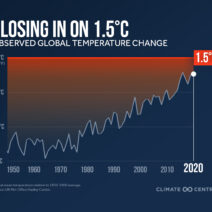As human beings, we often gravitate towards environments that are comforting and conducive to our wellbeing. The notion of relocating to warmer climates has been romanticized, particularly among those seeking refuge from the harshness of winter. However, does moving to a warmer climate truly have the potential to alter our physiology, specifically our blood? This question requires a nuanced examination, delving into the complexities of human physiology, environmental influences, and the science of climate variability.
The human body is remarkably adaptive. Over millennia, populations have evolved to thrive in diverse environments, from the icy tundras of the Arctic to the sweltering jungles of the tropics. One key component of this adaptability is the circulatory system, which plays a vital role in thermoregulation—the process by which the body maintains its core internal temperature. When individuals migrate to warmer climates, their bodies may indeed undergo physiological changes, but the specifics of how blood composition might be influenced are intricate.
To evaluate whether moving to a warmer climate can actually change blood properties, we must first consider the role of temperature on blood viscosity and circulation. Warmer temperatures can lead to vasodilation, where blood vessels expand, thereby allowing blood to flow more easily. This can result in lower blood pressure and improved circulation over time. Conversely, if the body is subjected to extreme heat without adequate hydration, blood viscosity might increase, potentially predisposing individuals to conditions such as thrombosis. Therefore, it is clear that temperature influences the physical properties of blood, yet whether these changes are permanent or merely temporary adaptations remains a point of contention.
Additionally, it is essential to understand the concept of acclimatization. Acclimatization is the body’s adjustment to changes in its environment, a process that can take days to weeks. When individuals relocate to warmer climates, they may exhibit alterations in cardiovascular function and blood volume. For example, increased heat leads to elevated sweat production, which could cause a temporary decrease in blood plasma volume. In response, the body compensates by producing more red blood cells to maintain adequate oxygenation levels, a phenomenon often observed in people who move to higher altitudes as well. However, the permanence of these changes can depend on factors such as the duration of exposure, age, and overall health.
On the other hand, we must be wary of the potential hazards associated with relocating to warmer climates. Excessive heat exposure can trigger a cascade of health issues, including heat exhaustion and heat stroke, which have profound impacts on the cardiovascular system. In environments where humidity is high, the body’s ability to cool itself through sweating is compromised, leading to increased cardiac stress. Thus, while the body possesses certain adaptive capabilities, the risks associated with extreme temperature exposure cannot be overlooked. This invites the inquiry—does the perceived benefit of warmer climates outweigh the potential physiological consequences?
Another critical aspect to consider is the role of diet and lifestyle in these adaptations. Relocating to a new environment often means a shift in dietary habits. Warmer climates frequently promote the consumption of lighter, more plant-based foods rich in antioxidants, vitamins, and minerals. This dietary transition can positively influence blood health by reducing inflammation and enhancing overall vascular health. Furthermore, increased exposure to sunlight in warmer regions can lead to enhanced vitamin D synthesis, pivotal in maintaining cardiovascular health and regulating calcium metabolism. However, one must also acknowledge that unhealthy dietary habits might similarly be adopted, which could adversely affect blood composition and overall health.
So, what of the popular belief that moving to a warmer climate might render one’s blood “thinner” or “healthier”? These anecdotes often lack robust scientific grounding. There is no empirical consensus that unequivocally suggests a direct causative relationship between geographic relocation and changes in blood properties. While warmer climates promote certain adaptive mechanisms, the myriad factors that influence blood health—genetics, pre-existing conditions, and lifestyle choices—must also be considered.
Moreover, psychological factors should not be ignored when deliberating the impacts of relocation. The mental state of individuals moving to a warmer climate can significantly enhance their overall health. Sunshine has therapeutic benefits that can positively affect mental health, potentially leading to improved lifestyle choices and an increase in physical activity. All these factors can interact to create a holistic picture of well-being, underscoring that while the blood might be influenced by external factors, the mind plays an equally pivotal role in one’s overall health adaptation.
In conclusion, the assertion that moving to a warmer climate can change your blood is a multifaceted issue laden with intricacies. While there are mechanisms wherein temperature, acclimatization, diet, and psychological factors influence blood properties, definitive outcomes are contingent upon a multitude of individual variables. Thus, while warmer climates may offer comfort and potential health benefits, these adaptations are neither absolute nor universal. Vigilance is required to navigate both the benefits and risks associated with such a transition, ensuring that the pursuit of a warmer climate ultimately promotes health rather than jeopardizes it.








